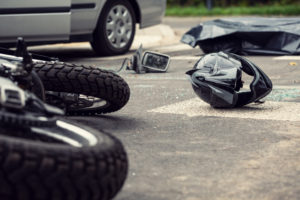Guardrails are supposed to absorb a car’s energy when they are hit from the front. In many cases, they are designed to absorb the energy and coil away. Yet, critics say that sometimes they fail, with catastrophic results. Rather than absorbing the impact, the guardrail can enter the car and spear the people inside.
Last November, a 17-year-old lost control of her vehicle and traveled into the median, striking the end of a guardrail with the driver’s door, according to a Tennessee Highway Patrol crash report. The guardrail end impaled the vehicle, striking the teen in the head and chest and pushing her into the back seat. She died instantly. In the aftermath of this tragedy, the Tennessee Department of Transportation mistakenly send her family a bill for nearly $3,000 to cover the cost of the guardrail repair. If that wasn’t shocking enough, it was later revealed that the agency decided to remove the guardrail end involved in the fatal accident — the X-LITE — from its list of approved products for new projects just one week earlier over concerns about how it would perform during high-speed crashes.
The most recent crash occurred on I-70 in Saline County, Missouri. For unknown reasons, a 2016 Chevy Silverado left the roadway. The vehicle struck a guardrail end, which is designed to cushion a crash. Instead, the end allowed the guardrail to act as a spear slicing, through the vehicle. The truck would travel another 168 feet along the guardrail. Despite wearing a seatbelt, the impact ejected the driver. He was pronounced died at the scene.
At least seven people have died, in six crashes, from accidents linked to the Lindsay Transportation Solutions’ X-LITE ends. But, the X-Lite has not been the only faulty guardrail end that passed federal crash tests. The safety of the ET-Plus design by Trinity Industries has been questioned in recent years, and the company faces a series of wrongful death lawsuits. Trinity supplies safety guardrails in most states.
After a study by the University of Alabama at Birmingham School of Engineering, partially funded by the Missouri Department of Transportation (MoDOT), it was determined in October 2014 that the ET-Plus design was almost four times more likely to be involved in a fatal accident than a previous model the company sold. The original design is credited with saving hundreds of lives since it was introduced in 1999, but according to News Trinity engineers calculated that shaving off an inch of metal from its end terminals would save about $2, or $50,000 a year. Trinity denies the changes were made to boost profits.
How does this continue to happen?
Safety advocates argue the Federal Highway Administration has failed to provide proper oversight by allowing the industry to police itself. The agency doesn’t conduct its own crash tests on roadside safety products such as guardrail ends. Instead, tests are commissioned and paid for by the companies which create the products. Although the testing is performed at one of nine certified labs across the country, the Government Accountability Office (GAO) found that six of those labs “evaluate products that were developed by employees of the parent organization; two are owned by companies that also develop roadside safety products. The GAO also found that the highway administration has no process for verifying the test results and urges the agency to make sure there are no conflicts of interest between the workers who test the devices and the companies who make them.
So, what is being done?
As these incidents continued to be reported nationwide, some states began acting on their own by banning further installation of the known defective guardrail ends. Since the results of the study, federal transportation officials have reported that 40 states have suspended installation of ET-Plus system, including Missouri. In fact, the MoDOT planned to replace all guardrails tested under the old standards within the next 10 years, but has now decided to prioritize the X-LITE after reviewing recent crash data and two fatal crashes in the state since 2015. Tennessee also said it plans to spend millions of dollars to repair and replace most of the 1,700 to 1,800 X-LITE guardrail ends on state roads. Since the beginning of 2016, X-LITEs have been involved in all three fatal crashes in that state, with guardrail penetration of vehicles.
As far as the Federal Highway Administration, the agency says that it is working to put the GAO recommendations it place. This includes an independent review of the roadside hardware eligibility process, accelerating the transition to next generation safety devices, and developing a process for third-party review of crash-test results.
Mark Bello is the CEO and General Counsel of Lawsuit Financial Corporation, a pro-justice lawsuit funding company.
@thumbnail.jpg)
Experienced attorney, lawsuit funding expert, certified civil mediator, and award-winning author of the Zachary Blake Legal Thriller Series. The series features super-trial lawyer Zachary Blake handling "ripped from the headlines" legal and political issues of the day. The series currently consists of Betrayal of Faith, Betrayal of Justice, Betrayal in Blue, Betrayal in Black, and Betrayal High, with a sixth Zachary Blake novel due out later this year. To learn more about these topical social justice legal thrillers. please visit markmbello.com. Mark is a member of the State Bar of Michigan, a sustaining member of the Michigan Association for Justice, and a member of the American Association for Justice.










2 Comments
danny reed
Please push to have all of the ET-Plus guardrail heads removed from ALL roads in the US ASAP- have a federal recall?
Roy Riedl
Don't be so quick to blame the terminals. If a driver is driving beyond the posted speed limit for whatever reason impaired, fell asleep etc its the drivers fault. If the state DOT doesn't have the terminal location prepared properly or doesn't maintain the terminal after they sign off on the installation the terminal it will not work properly. Don't forget improper installation and the dot performing maintenance (when they do)with no oversight. Plenty of blame to go around all parties need to take responsibility.
Comments for this article are closed.